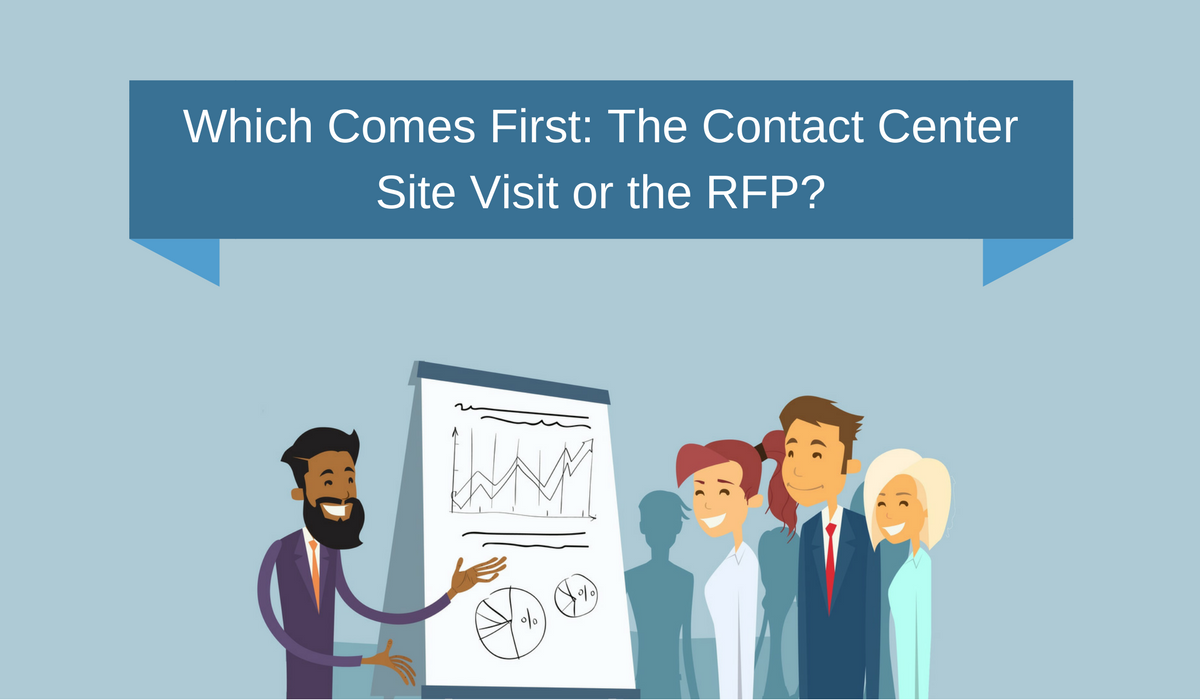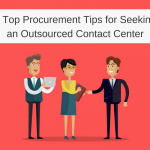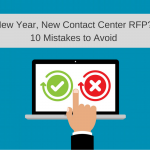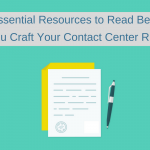Which Comes First: The Contact Center Site Visit or the RFP?

Would you buy a house without first walking through it? Even fully armed with an exhaustive list of property details, features, and listing information, would you really be comfortable forking over your hard-saved down payment and signing on the mortgage without at least taking a tour? Unless you’re a daring risk-taker, the answer is probably not. You need tangible reassurance that your new home will be the best fit (and won’t end up costing you more than it’s worth.)
The same must be said when you’re looking to build a strategic partnership with a new contact center outsourcer. Before you sign that contract, due diligence is required to make sure it’s the right fit. The contact center RFP is essential, of course, but the contact center site visit is invaluable. The question is, which comes first? The RFP or the site visit?
The Contact Center RFP Process
The RFP is all about discovery, scoping out exactly what functionalities, capabilities and infrastructure you require a partner to fulfill. It will tell you almost everything you need to know, from the experience of the account managers on your project to the training processes of the frontline agents to the intricacies of the technical solution. The RFP process helps you shortlist the number of outsourcers you’re willing to consider.
But the RFP falls short in two places.
First, as valuable as it is at describing all the objective features of the program, it is pretty much entirely useless at telling you much about the culture and environment of the outsourcer. Even if you include questions asking about those very details, no answer can truly capture the intangible nature and personality of a dynamic work environment. And that work environment is what nurtures and supports the frontline agents as they interact directly with your customers. Ensuring that a partner’s culture and environment is a fit with your program requires a site visit.
Secondly, the contact center RFP timeline is by necessity a time-consuming process. Estimates of 4-6 weeks may seem generous but are rarely long enough. The worst part is that you have no guarantee that your short list at the end of the RFP process will even include partners whose environment is the right fit. A real estate listing might tell you the square footage, number of rooms, and age of the house, but it won’t reveal the “character” of the house, how its layout feels, or the integrity of the foundation like a tour and inspection will. Likewise, an RFP can be just as shortsighted, leaving you with a couple of shortlisted options that may not fit the bill once you finally get around to visiting them. And that would put you back at square one.
The Contact Center Site Visit
Time is money. The potential for set-backs in the RFP process is enough to reveal the true value of the contact center site visit. It might even be enough to prove it should happen first. Once you’re certain that the intangible features of a contact center have been met, the RFP process becomes much more certain and effective. Here’s what you should be looking for:
• Collaboration. A true contact center partner is seeking a mutually beneficial relationship with their client. That means they’re going to want your insight and collaboration regarding the agenda of your site visit. Is this a team you can envision collaborating with on a daily basis? Are they demonstrating trust and transparency, encouraging their employees to interact openly with you? If, instead, management is controlling, using your visit as just another opportunity to pitch the sale, be warned that you may not be getting the whole story.
• A Friendly Atmosphere. Remember, these people will be taking care of your customers. If the atmosphere is anything but hospitable, can you expect a positive customer experience? Look for friendliness and warmth not only in conversations but also in body language – and across all levels of employee, from agents through to management. Tension or disengagement are warning signs that this may not be the right fit.
• A Nurturing Environment. Being a contact center agent can be tough. These are the people dealing with complaints, unhappy or frustrated customers, and nonstop phone calls. A contact center partner needs to help their agents from burning out and becoming disengaged. A nurturing physical environment is most definitely part of that; it’s the difference between working in a drab builder-beige cube farm or windowless-dungeon and working in an engaging workspace with loads of natural light and attention to the small details of design. Ask yourself the question: can you picture yourself working there? If you answer yes, that’s a good indicator that your company and the contact center are probably culturally aligned.
When it comes down to it, the decision-making question in choosing a contact center partner is, “can you work with these people?” If there’s close cultural alignment between your teams and your environments, then the answer is almost certainly, “yes.” But ascertaining that alignment is only possible through an in-real-life site visit. Once you have a handful of yeses on your hands from a small number of outsourcers, it will likely speed up the RFP process and decision-making.
But what about the expense? The expense of site visits is probably the number one objection to scheduling them before the RFP process. In all honesty, we’re not denying that conducting a number of site visits can get costly when you figure in travel and accommodations, not to mention the time of whomever is visiting. However, those costs are a small drop in the bucket compared to the investment you’re making in a new contact center partner. When you’re trusting “strangers” with the intimate and ongoing relationship with your customers, that initial cost of a site visit is inconsequential compared to what you’re willing to invest to ensure the greatest customer experience. Finally, wouldn’t you rather dismiss the bad fits first rather than risk they make it to your RFP shortlist in the place of worthier opponents?
Partnering with a Contact Center Outsourcer
At the end of the day, finding the best-fit partner for your outsourced contact center is paramount to success. How you go about finding that best fit will be a unique process that reflects the nuances and individual requirements of your organization. However, the site visit is invariably the piece of the puzzle that ensures cultural alignment, the foundation to your partnership.
Looking for a contact center outsourcer? We’d love to chat more in our sun-lit offices over a steaming mug of good coffee. Let us know when you’re ready to visit. We’ll be waiting. Click here to send us a message.
Want more info? Download one our complimentary eBooks for more insight:
• What Your Outsourcer Should Tell You About Hiring Contact Center Agents: A Client’s Guide

![What You Need to Know When Looking for a New Contact Center Outsourcer [Slideshare]](https://blueocean.ca/wp-content/uploads/2017/07/What-You-Need-to-Know-When-Looking-for-a-New-Contact-Center-Outsourcer-150x150.png)

